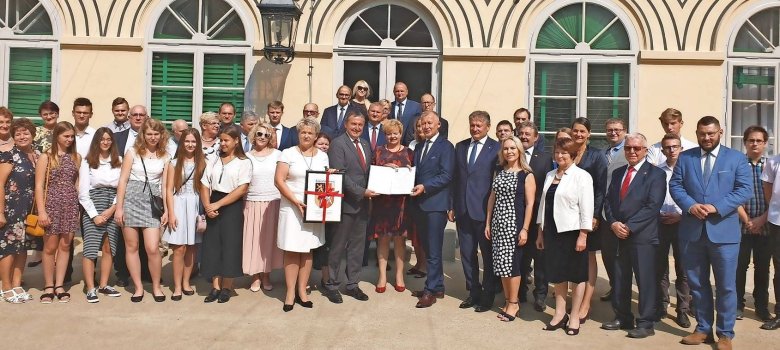District of Łańcut

The partnership between the Saarpfalz district and the district of Łańcut was officially sealed on 22 October 2021, although the first contacts between the two districts were established much earlier. Back in August 2019, a joint declaration of intent was signed during a delegation visit to Łańcut Castle, creating the basis for long-term cooperation. However, the establishment of the partnership was delayed due to the pandemic.
A central theme of the partnership is the joint commitment to a cross-border reappraisal of history in the spirit of German-Polish reconciliation and peacemaking. Since District Administrator Dr Theophil Gallo's first visit to the partner district of Łańcut, the "Museum of Poles who saved Jews during the Second World War - the Ulma family" in the municipality of Markowa has been a special meeting place. As the first and most important stop on the visit, the museum, which is dedicated to the Ulma family, symbolises the understanding of shared values and messages of cooperation in a unique way.
Józef Ulma and his heavily pregnant wife Wiktoria hid two Jewish families during the German occupation of Poland during the Second World War, despite the threat to their lives, in order to save them from the Holocaust. However, the couple were betrayed and shot with their seven children and the eight Jews they had hidden on 24 March 1944. To ensure that fates such as these are not forgotten and serve as a memorial to charity and peaceful coexistence, the district councils of the two districts have made it their joint task to address the unspeakable events of the past with caution and consideration for individual perceptions of history, but nevertheless clearly.

Their ideas and suggestions set the tone for the establishment of the "Decade of Youth and Remembrance" as part of the "International Alliance for Peace and Cohesion in Europe", to which the two districts belong as alliance partners. They resulted in special key events that not only strengthened the bond between the partner districts, but also provided important impetus for German-Polish cooperation at a supra-regional and national level.
